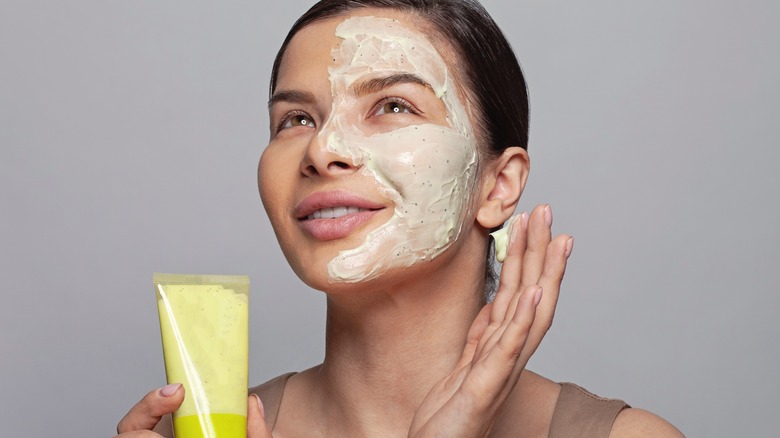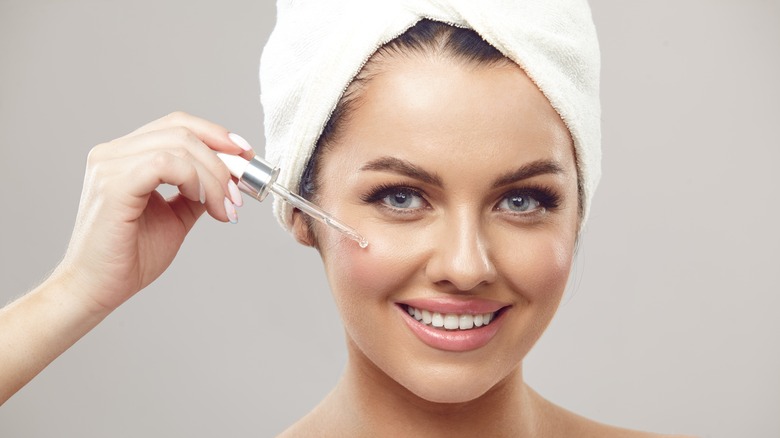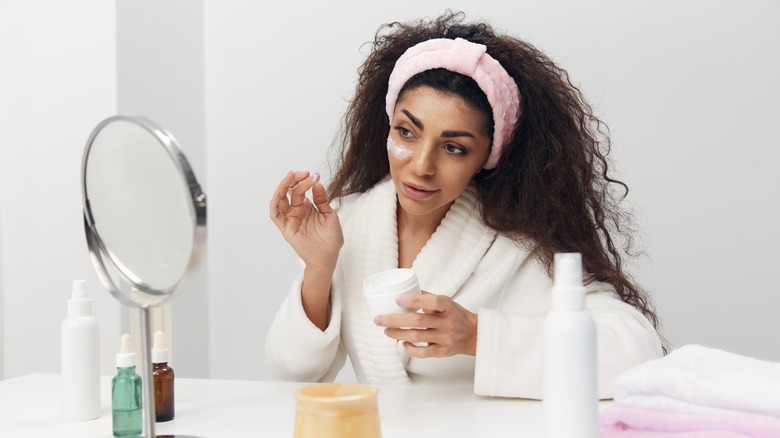Here's Where An Acne Spot Treatment Should Go In Your Skincare Routine
We've all been there: acne shows up out of the blue despite your skincare routine supposedly preventing skin issues. Thankfully, there are plenty of solutions you can use to clear your skin. Acne spot treatments are one of those products everyone should have in their arsenal in case of an emergency. According to Slather, acne spot treatments are used to treat papules and pustules — aka surface-level pimples.
Although it would be easier to not have to deal with any type of acne, spot treatments are quick and easy ways to deal with sudden flare-ups. Used on an as-needed basis, spot treatments should perfectly blend into your skincare routine. Choosing the best acne spot treatment is crucial so as not to cause any unnecessary damage to the skin. Then, once you've chosen your match in acne spot treatment, placing it in the right order in your skincare routine is necessary for clear, glowy skin. If you don't place all of your skincare products correctly, you could be lowering the efficiency of other products or completely nullifying the acne spot treatment. Here's exactly what you should do.
When to use an acne spot treatment
According to Skincare.com, there are a few general rules to follow when applying an acne spot treatment. Most acne spot treatments should be applied after cleansing but before serums or creams. You want the treatment to be as close to the skin as possible to have a more direct effect on the acne. The only exception to this is if you are using a high-grade acne spot treatment with harsher chemicals. If you're using a harsher acne treatment, you may want to apply a thin layer of moisturizer to act as a light buffer.
Before moving on to your next product, you will want to wait a few minutes for the product to fully absorb into your skin. According to Skin Therapy, you will want to limit yourself to only using a spot treatment on the afflicted area. Using an acne spot treatment over a large area of skin risks drying out the healthy areas of the skin. It's important to continue your skincare routine as normal with the exclusion of chemicals or exfoliators when using spot treatments. After all, you don't want your regular routine to suffer simply because you're treating a pimple or two. Mixing chemicals can pave way for skin triggers, though, so just ensure none of your products are harmful for each other before proceeding.
What to keep in mind when using acne spot treatments
While using acne spot treatments is as easy as putting a dot on your acne, there are still some things to keep in mind to not damage your skin. According to 100% Pure, you want to limit the number of times you use spot treatments. Since these products are meant to be used only when necessary, using them multiple times a day can be very drying. Regardless if you have more sensitive or normal skin, spot treatments can be equally damaging when used excessively.
When using spot treatments, it's important to remember that they are simply products that help solve existing acne. Acne spot treatments are not made to prevent acne, and they won't help get rid of acne in the long term. The only way to ensure that you have the least amount of acne as possible is by having a daily routine with products that target acne-prone skin and following a consistent routine. Regular exercise and a healthy diet can also help regulate acne, as well as lead to a healthier lifestyle in general.


